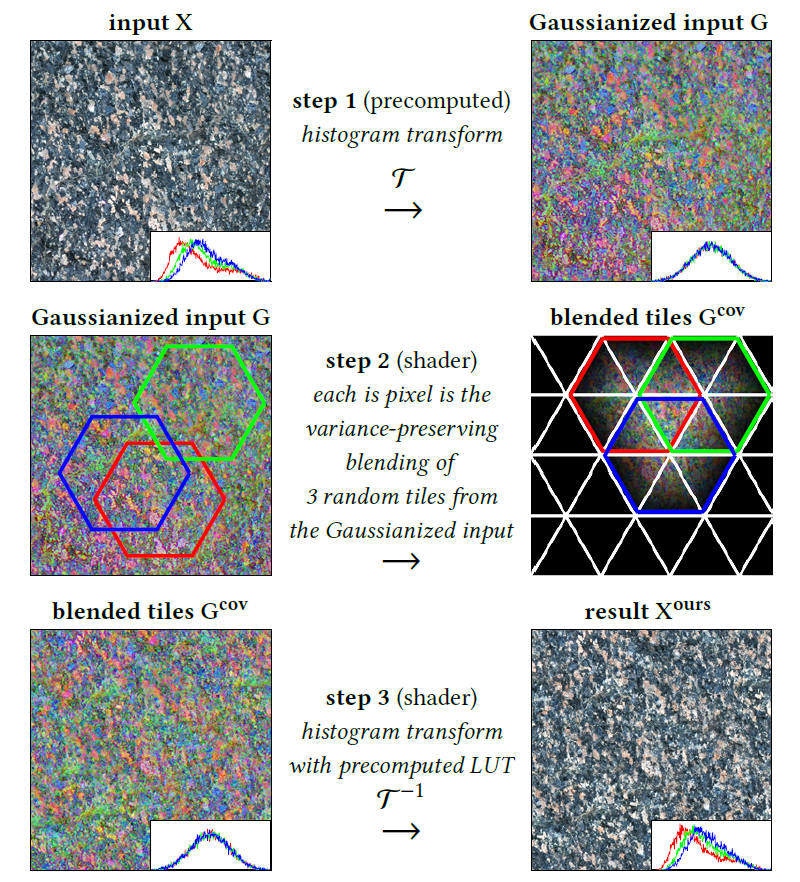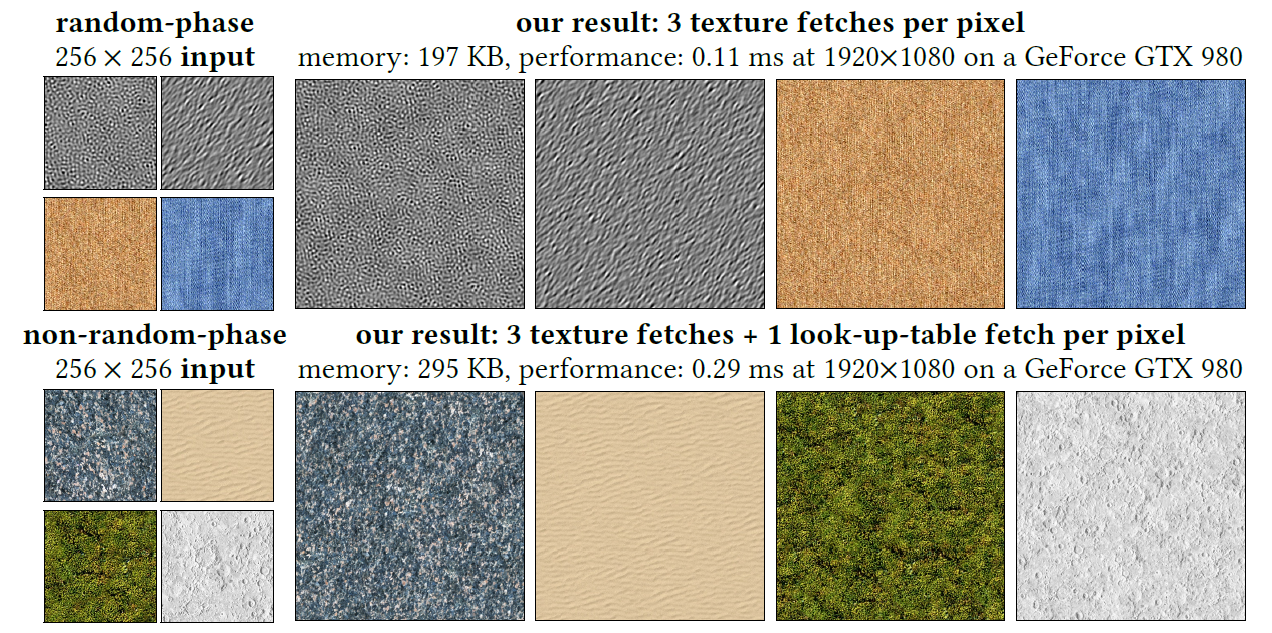Section: New Results
Texture synthesis
Gabor noise revisited
Participants : Vincent Tavernier, Fabrice Neyret, Romain Vergne, Joëlle Thollot.
Gabor Noise is a powerful procedural texture synthesis technique, but has two major drawbacks: It is costly due to the high required splat density and not always predictable because properties of instances can differ from those of the process. We bench performance and quality using alternatives for each Gabor Noise ingredient: point distribution, kernel weighting and kernel shape. For this, we introduce 3 objective criteria to measure process convergence, process stationarity, and instance stationarity. We show that minor implementation changes allow for speed-up with same or better quality (see Fig. 11).
This paper was presented at AFIG [17] and received the best paper award. An article has been submitted to Eurographics-short 2019.
|
High-performance by-example noise using a histogram-preserving blending operator
Participants : Eric Heitz, Fabrice Neyret.
We propose a new by-example noise algorithm that takes as input a small example of a stochastic texture and synthesizes an infinite output with the same appearance. It works on any kind of random-phase inputs as well as on many non-random-phase inputs that are stochastic and non-periodic, typically natural textures such as moss, granite, sand, bark, etc. Our algorithm achieves high-quality results comparable to state-of-the-art procedural-noise techniques but is more than 20 times faster. Our approach is conceptually simple: we partition the output texture space on a triangle grid and associate each vertex with a random patch from the input such that the evaluation inside a triangle is done by blending 3 patches. The key to this approach is the blending operation that usually produces visual artifacts such as ghosting, softened discontinuities and reduced contrast, or introduces new colors not present in the input. We analyze these problems by showing how linear blending impacts the histogram and show that a blending operator that preserves the histogram prevents these problems. The main requirement for a rendering application is to implement such an operator in a fragment shader without further post-processing, i.e. we need a histogram-preserving blending operator that operates only at the pixel level. Our insight for the design of this operator is that, with Gaussian inputs, histogram-preserving blending boils down to mean and variance preservation, which is simple to obtain analytically. We extend this idea to non-Gaussian inputs by "Gaussianizing" them with a histogram transformation and "de-Gaussianizing" them with the inverse transformation after the blending operation. We show how to precompute and store these histogram transformations such that our algorithm can be implemented in a fragment shader, as illustrated in Fig. 12. This work received the Best Paper Award at High Performance Graphics 2018 [4].





